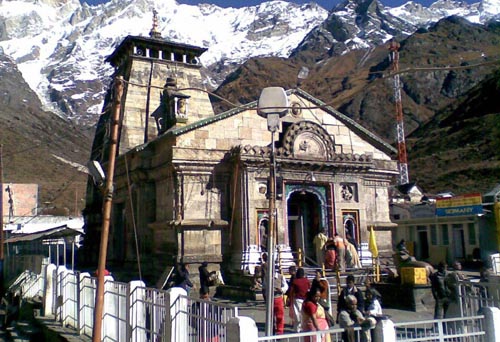Kedarnath Temple

Information of Kedarnath Temple, Rudraprayag, Uttarakhand
Kedarnath Temple is the heavenly abode of Lord Shiva in the Gharwal Region of the Himalayan Mountain ranges of India. This is an important ancient Hindu temple which was restructured in the 8th century AD and is still standing divinely on this Kedhar mountains. Even the 2013 Flash Floods were not able to shake this temple. It is divinely aside by the Mandakhini River, a glacier and with few snow caped mountain summits. It is a spiritual place one must visit in the Panch Kedar pilgrim seasons at Kedarnath, Uttrakhand State of India.
Kedarnath Temple Religious Significance
Kedarnath literally means the Lord of Kedhar or the abode of the god in Kedhar location. It's a very good place for divine meditation amidst the Greater Himalayas for all peoples on earth. Many people have including the foreigners come here to seek such divine values of these mountain ranges. Lord Shiva used to meditate for a longer period of time and he was personally made to move to Badhrinath due to the Pandava's arrival in the Kedhar. Lord Shiva is one of the supreme gods in the Hindu trinity and once in a life time these Panch Kedhar's must be visited if born in the Indian sub continent. Since the Himalayas and the River Ganges are sacred source of life to Hindus. Lord Shiva is known to flow down the Ganges River to the plain lands of India. You can see many images were a spring like water flows from his head. These are the beliefs of the Hindus. This temple is very important for all sects of Hindus and is in the highest order in the pilgrimage list for Hinduism.
Festival at Kedarnath Temple
Kedarnath Temple celebrates the Maha Shivarathri as its major temple festival. This auspicious day occurs on the panch kedar pilgrim seasons and there are lakhs of devotees arrive at this temple on this occasion and make it a grand festival with lot of rituals and ceremonies conducted by its temple priests. The Panch kedhar itself looks like a festival since this is the only time these temples can be accessed, since rest of the six months are with snows and very cold climates.
Kedarnath Temple Mythology & History
As per the Hindu mythology and beliefs, Lord Shiva's abode was the Himalayan Mountains. The Mount Kailash is his primary location and he did mediation all over the Himalayan Mountain ranges. Now these places are worshiped as the holy place for the Hindus. Few places with presence of his processions left were built as a temple near by it. Since ancient times there is a record for the presence of Shiva temple here. These are well noted in the Epic Saga of Mahabharata and in the Skanda Puranas, which are the ancient Hindu Scared Texts. It also mentions the Pandavas, who were the legend of Mahabharata came here to see the Lord Shiva and get salvation from the latest war they fought against their own relative brothers. This temple was also founded by them is mentioned in the Vedic Texts.
Kedarnath Temple Architectural Significance
Kedarnath Temple is built in the Nagara style. This is a great stone temple with unique architectural values. Previously these were in the open lands with the Shiva Linga and tridents on the Kedhar grounds. It was in the 8th century AD; a Hindu Saint named Adhi Shankara visited here and took initiative to make it an important pilgrimage place by spreading the importance of this place and related to Lord Shiva. There after many rulers of Gharwal and Kumoun region and including the Nepal Kings granted funds to build this magnificent temple. This temple is built in the shape of a huge tiered tower with a traditional home like structure on its front area. The main sanctum sanctorum is just done under the main tower. The main idol is another form of Lord Shiva as the Lingam. You can find a Nandhi idol in front of this temple facing directly towards the temple entrance. There are many tridents fixed on the grounds and many brass bells hanged on the walls and pillars since many centuries.
- Andhra Pradesh Temples
- Assam Temples
- Bihar Temples
- New Delhi Temples
- Goa Temples
- Gujarat Temples
- Jammu and Kashmir Temples
- Karnataka Temples
- Kerala Temples
- Madhya Pradesh Temples
- Maharashtra Temples
- Odisha Temples
- Punjab Temples
- Rajasthan Temples
- Sikkim Temples
- Tamil Nadu Temples
- Telangana Temples
- Uttar Pradesh Temples
- Uttarakhand Temples
- West Bengal Temples